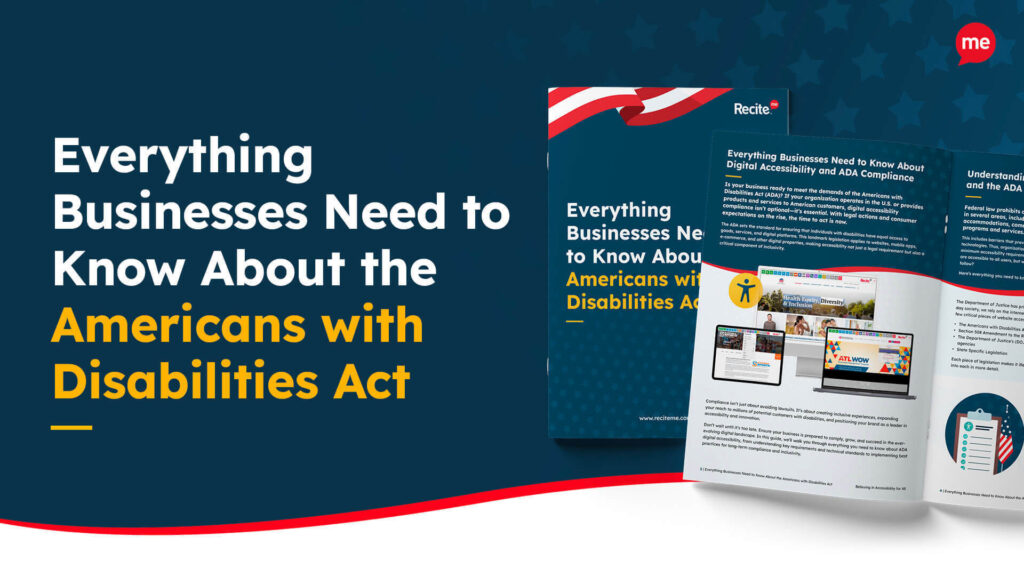Get A Free ADA Compliance Audit Of Your Website
Download NowPDFs are often the most common way organizations share information, whether it’s reports, manuals, forms, or educational materials. But if those PDFs aren’t accessible, a large portion of your audience may be left out. You may also be putting your organization at risk by not following the Americans with Disabilities Act requirements.
Check out our guide to make sure your PDFs are fully ADA-compliant and inclusive for users with vision, hearing, or cognitive impairments.
What the Americans with Disabilities Act means for PDF files
The Americans with Disabilities Act (ADA) ensures that people with disabilities have equal access to public information, including digital content like PDFs. Since PDFs are everywhere, it’s crucial they’re usable by people with disabilities. To comply, your PDFs should function seamlessly with screen readers, magnification tools, and assistive technology.

How WCAG guides the standards for creating ADA-compliant PDFs
The Web Content Accessibility Guidelines (WCAG) provide a global standard for digital accessibility. WCAG outlines criteria for perceivable, operable, understandable, and robust content, which also applies directly to PDFs. By following WCAG, you ensure your PDFs can be navigated and understood by all users.
| WCAG Principle | Relevant PDF Requirement |
| Perceivable | Provide text alternatives for images and figures, ensure meaningful document structure with tags, use sufficient color contrast, and add captions or transcripts for multimedia. |
| Operable | Ensure logical keyboard focus and tab order, label all form fields, provide clear navigation through bookmarks and links, and avoid time limits users can’t adjust. |
| Understandable | Maintain a semantically correct reading order, declare the document’s primary language, use descriptive link text, and apply consistent headings and layout for clarity. |
| Robust | Follow PDF specifications, use valid tagging and metadata, avoid security settings that block assistive technology, and test documents with screen readers for compatibility. |
The DOJ mandate is approaching for public entities
On April 24, 2024, DOJ issued a final rule under Title II of the ADA requiring state and local governments to make web content and mobile apps accessible per WCAG 2.1 Level AA. This is significant for public entities that rely on PDFs, as they will also need to meet ADA compliance requirements by the following deadlines:
- Entities serving 50,000 or more people must comply by April 24, 2026.
- Entities with populations under 50,000 have until April 24, 2027.
Want to make sure your website is compliant with the Americans with Disabilities Act? Then unlock the ADA compliance checklist now. Discover actionable steps to ensure ADA compliance, helping you avoid lawsuits and any other negative consequences of non-compliance.
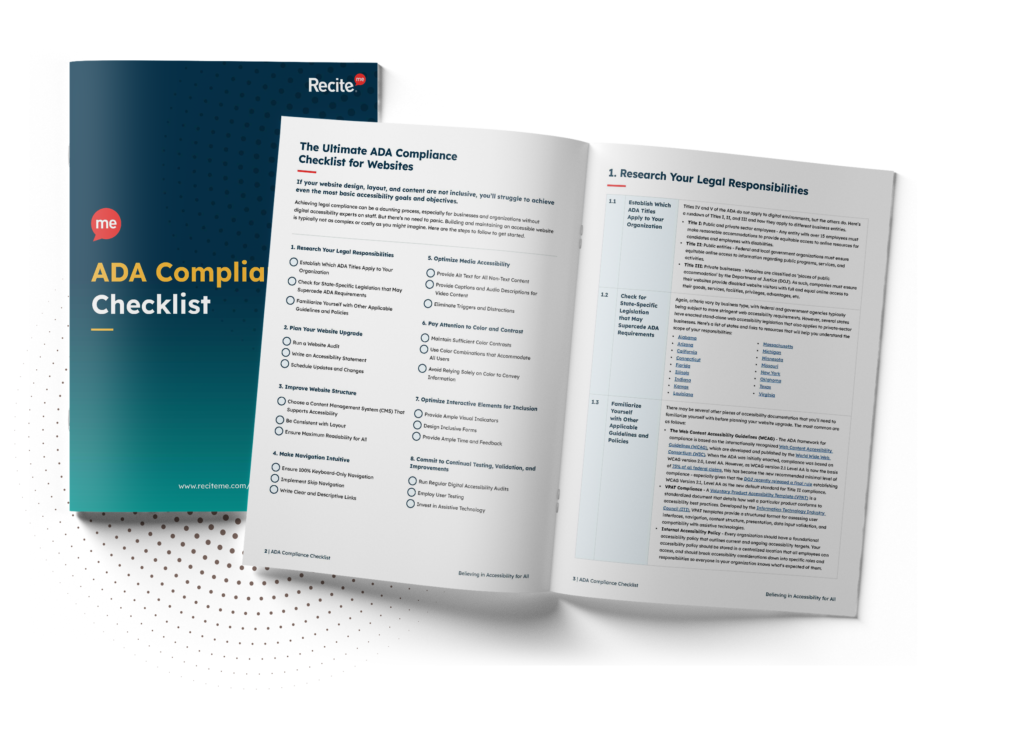
Technical requirements for creating PDFs that comply with the ADA
Making a PDF ADA-compliant isn’t just about looks, it needs to be built the right way. Certain technical steps, like tagging, alt text, and proper structure, make sure everyone can use your documents.
Proper document structure (tags, headings, lists)
PDFs without proper tags, headings, and lists can be difficult for screen readers to interpret. This often happens when content is exported from programs like Word or InDesign without accessibility settings, resulting in missing or improperly applied tags. Users relying on screen readers or other assistive technology may struggle to navigate the document logically.
To resolve this, ensure all PDFs include structural tags for headings, paragraphs, and lists, and maintain a clear hierarchy so screen readers can present the content in a meaningful order.
Reading order and logical flow
A disorganised PDF can cause screen readers to read content out of sequence. This issue commonly occurs when visual layouts, columns, or complex designs confuse automated reading order. Users with visual impairments who rely on screen readers may be unable to follow the intended flow of information.
To fix this, you can use accessibility tools to review your documents and ensure that headings, paragraphs, lists, and tables follow a logical and sequential flow.
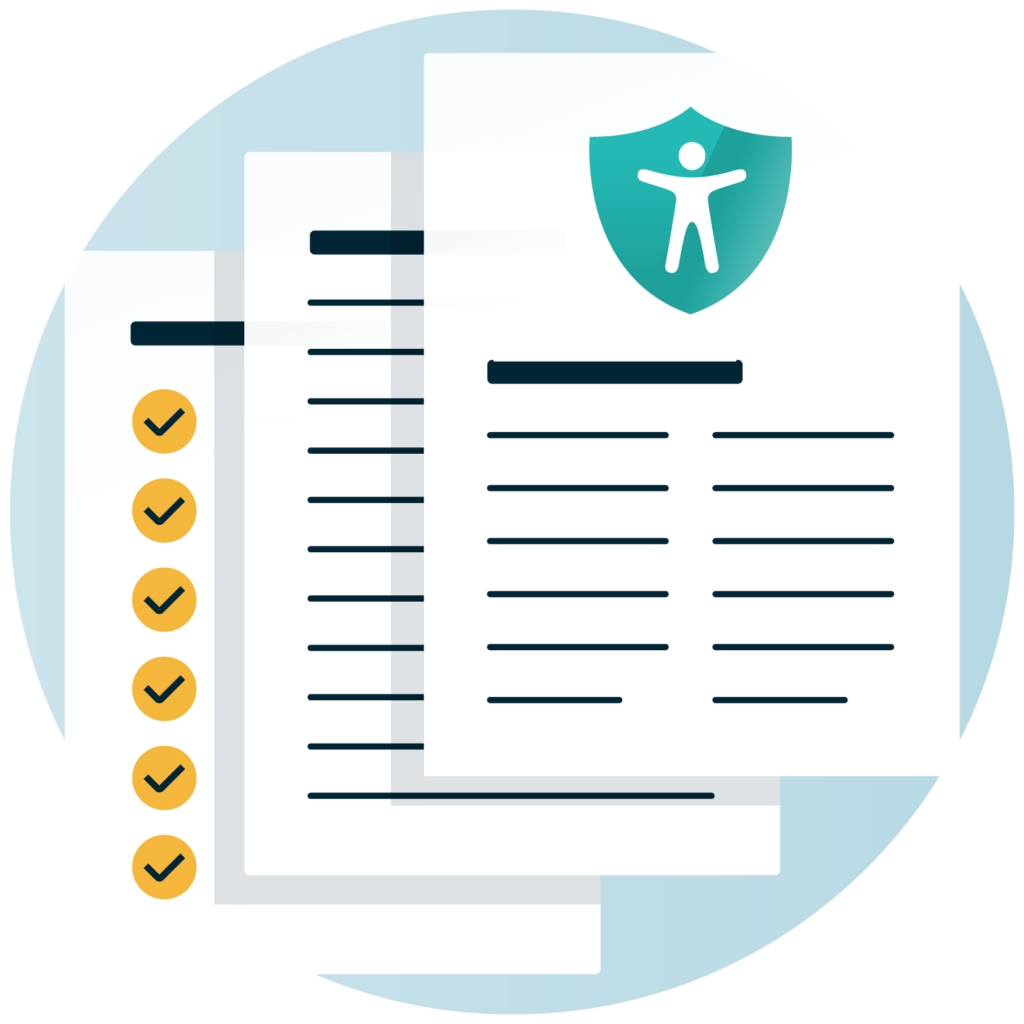
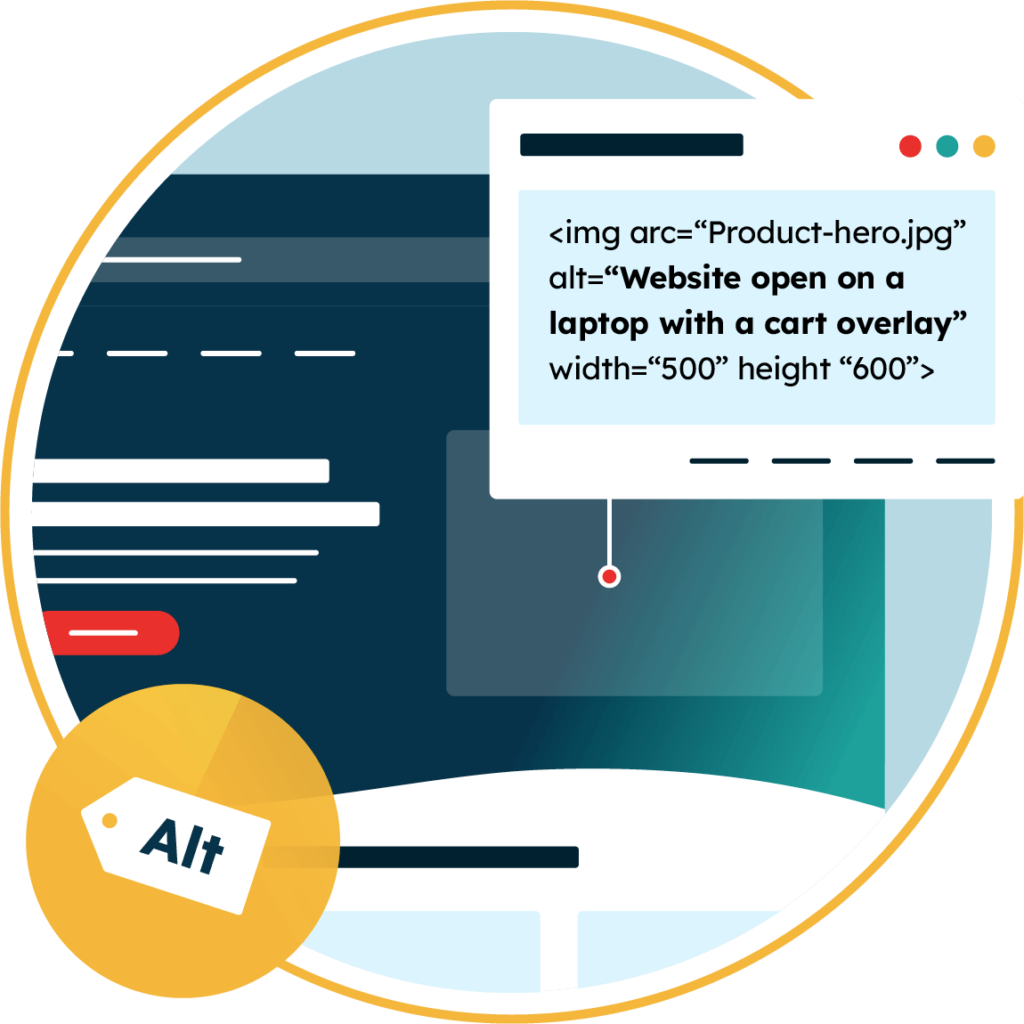
Alternative text for images and figures
Images and graphics without descriptive alternative text are invisible to blind and visually impaired users. This problem often arises because creators forget to add alt text when inserting images. As a result, people using screen readers can miss important information that’s only communicated visually, making the content inaccessible.
To resolve this, provide concise, meaningful alternative text that communicates the purpose or content of each image.
Tables: headers, summaries, and markup
Tables that lack proper structure can be misinterpreted by screen readers, making the data difficult to understand. This often occurs when tables are exported without tagging or without defining header rows and means users with visual impairments may struggle to discern relationships between rows and columns.
You should ensure accessibility requires marking header rows, including summaries, and applying proper table markup so that screen readers can navigate and interpret the data correctly.

Form fields, annotations, and interactive elements
Forms, buttons, and annotations that are not properly labeled or tagged can be unusable for assistive technologies. Problems arise when fields lack labels, tab order is unclear, or instructions are missing. This affects users with visual or motor impairments who need to complete forms independently.
To resolve this, provide clear labels for all fields, ensure a logical tab order, and include descriptive instructions. All interactive elements, including buttons and annotations, should be accessible.
Fonts, color contrast, and text clarity
Poor font choices, low contrast, and cluttered text reduce readability for many users. These issues often occur when cursive or decorative fonts are used, as well as small sizes or insufficient color contrast. Users with visual impairments or cognitive difficulties may struggle to read and comprehend the content.
To address this, use readable fonts (like Arial, Verdana or Times New Roman), maintain high color contrast (like black and white), and ensure sufficient spacing and clarity to improve comprehension for all users.
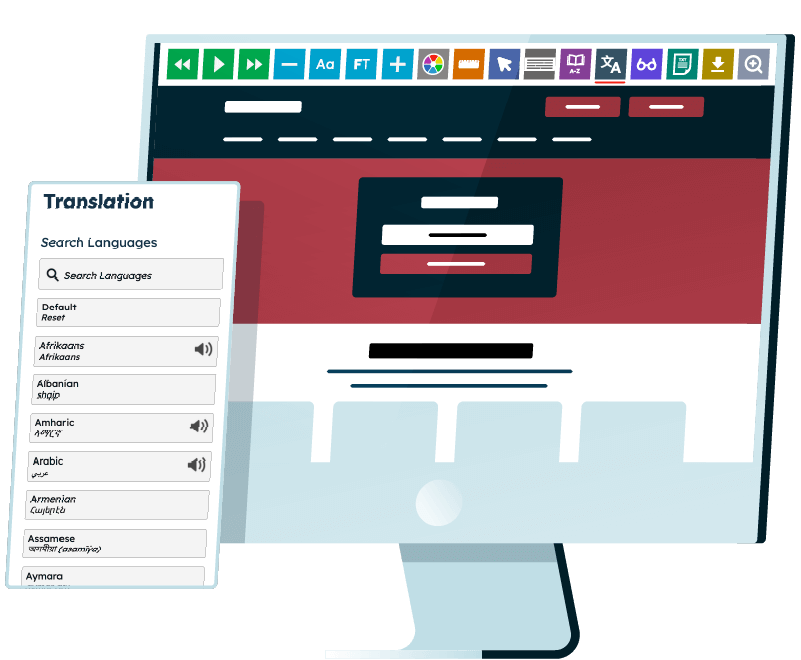
Language declaration
Screen readers may mispronounce content if the primary language of a PDF is not declared. This commonly happens when PDFs are exported without specifying the main language or marking multilingual sections. Users relying on screen readers for accurate interpretation may have difficulty understanding the content.
To fix this, declare the primary language in the document properties and mark any sections where the language changes.
Metadata and document properties
Missing metadata can make PDFs harder to navigate or search using assistive technology. This often occurs when creators omit titles, authors, subjects, or keywords. Users who rely on document metadata for navigation or context may find the PDF less usable.
To resolve this, include relevant metadata such as title, author, subject, and keywords. Proper metadata enhances accessibility, provides context, and improves the discoverability of the document.

Links and Navigation
Hyperlinks that are vague, such as “click here” or “read more,” can confuse users who rely on screen readers because they provide no context about the destination. This problem occurs when links are inserted without descriptive text or when PDFs lack navigation aids like bookmarks and tables of contents. Users with visual impairments or mobility challenges may struggle to move through the document efficiently.
To resolve this, always use descriptive link text that explains the destination (e.g. “View the accessibility guide”) and add bookmarks or a linked table of contents for longer documents to support quick navigation.
Scanned PDFs and OCR
Scanned PDFs that are saved as images are completely inaccessible to screen readers because the text cannot be detected. This often happens when documents are digitized without running Optical Character Recognition (OCR). Users with visual impairments are unable to access any of the content in these image-only files.
The solution is to apply OCR so that text becomes selectable, searchable, and screen-reader compatible. After OCR, check and correct any errors in the recognized text to ensure accuracy and accessibility.

Why ADA compliance is important for your visitors
ADA compliance ensures all visitors have equal access to your documents, including those with disabilities. By providing inclusive content, you build trust, demonstrate a commitment to diversity, and create a more welcoming experience for everyone. Making accessibility a priority not only supports your visitors’ needs but also broadens your audience, allowing more people to engage with and benefit from your materials.
The risks your organization could face by ignoring ADA compliance
Ignoring ADA compliance doesn’t just create accessibility barriers, it also puts your organization at serious risk. The costs of inaction far outweigh the effort of making your PDFs accessible. Here are the key risks to consider.

Legal risks
Failing to make your PDFs ADA-compliant can expose your organization to lawsuits, fines, and regulatory penalties.
ADA accessibility lawsuits are on the rise with over 4,000 recorded last year. Organizations of all sizes, from corporations to nonprofits, have faced costly fines and penalties for non-compliance.
Reputational risks
An inaccessible website or PDF signals that inclusivity is not a priority, which can damage your brand’s credibility. Customers, employees, and partners increasingly value accessibility, and ignoring it can erode trust and public perception.
Increased costs
When accessibility isn’t built in, teams often face repeated remediation efforts, driving up costs and wasting resources. Proactively making PDFs compliant reduces long-term workload and streamlines content production.
Tools to help your organization work toward compliance
Making PDFs accessible can feel complex, but the right tools make the process much easier. Recite Me’s range of digital accessibility tools will help identify issues, facilitate fixes, and ensure your documents meet ADA standards efficiently.

Run a free ADA accessibility check of your website
With Recite Me, you can run a free ADA accessibility check on your website, quickly identifying issues that could prevent users with disabilities from accessing your content. The tool scans for missing tags, gaps in alt text, color contrast problems, and structural errors that may confuse screen readers or other assistive technology.
After the scan, Recite Me provides clear, actionable insights so your team knows exactly what needs attention. Regular accessibility checks help maintain compliance, improve usability for all users, and ensure your content is inclusive.
Use our ADA checklist to make manual changes to your website
Recite Me offers a practical ADA compliance checklist to guide your team through making practical, step-by-step improvements to your website. The checklist covers everything from adding descriptive alt text and validating links to checking heading structures and ensuring forms are fully accessible.
By following the checklist, you can manually fix accessibility issues and make sure no ADA requirements are missed, giving you more control over your site’s compliance


Provide free ADA training to key contributors
Accessibility is most effective when everyone involved in content creation understands the standards. Recite Me provides free ADA training to key contributors, including writers, designers, and editors. The training covers essential topics like PDF tagging, adding meaningful alt text, color contrast, and WCAG compliance, ensuring your team can consistently create accessible content. By educating your team, you build long-term accessibility practices into your organization and help to future-proof your new and existing content.
Get a free automated ADA compliance audit of your website. This audit will highlight compliance violations and provide the recommendations needed to meet ADA compliance standards.
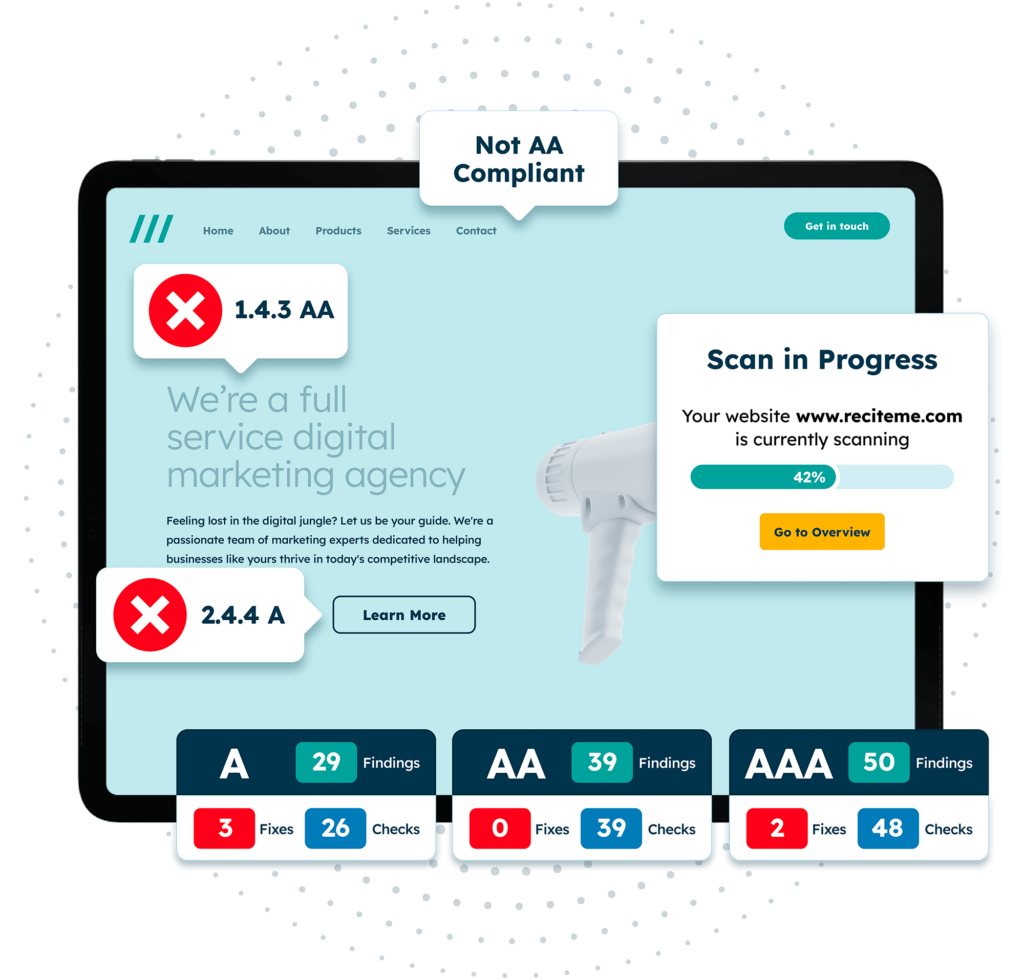
Conclusion: Set your PDFs up for success with ADA compliance
Making your PDFs ADA-compliant goes far beyond meeting legal obligations, it’s about creating content that everyone can use and benefit from. By designing documents with accessibility in mind, you are open to a wider audience, improve usability for all readers, and send a powerful message that inclusion matters to your organization.
Accessibility doesn’t have to be overwhelming with the WCAG standards and the right tools to guide you. Each step toward compliance strengthens both your digital presence and your relationship with your audience.
PDF ADA Compliance FAQs
Looking for a recap or quick summary? Here are a few of our most frequently asked questions to help you get to grips with the essentials:
What is an ADA-compliant PDF?
An ADA-compliant PDF is a document designed so all users, including those relying on screen readers or other assistive technology, can access and understand the content without barriers.
Do all PDFs need tagging?
Yes. Tags provide the structural framework of a PDF, such as headings, lists, and paragraphs. Proper tagging ensures screen readers can interpret and present the document in a logical order.
What are the legal risks of non-compliance?
Organizations that fail to provide ADA-compliant PDFs risk lawsuits, fines, and settlements. Non-compliance can also lead to reputational harm, loss of trust, and exclusion of users with disabilities.
Can scanned PDFs be accessible?
Scanned PDFs saved as images are not accessible by default. To make them compliant, apply Optical Character Recognition (OCR) so the text is selectable, searchable, and usable by screen readers.
What role does metadata play in PDF accessibility?
Metadata provides essential information like title, author, subject, and keywords. Adding metadata improves document navigation, provides context for assistive technology like screen readers, and enhances the discoverability of your PDF content.
Need more help becoming ADA compliant?
The following resources are packed full of actionable tips and expert advice for making your digital content compliant with the Americans with Disabilities Act:
Free ADA Accessibility Training
Take the first step to ADA compliance by completing our training course.
Free ADA Accessibility Guide
Ensure your organization is meeting the requirements for ADA compliance.



